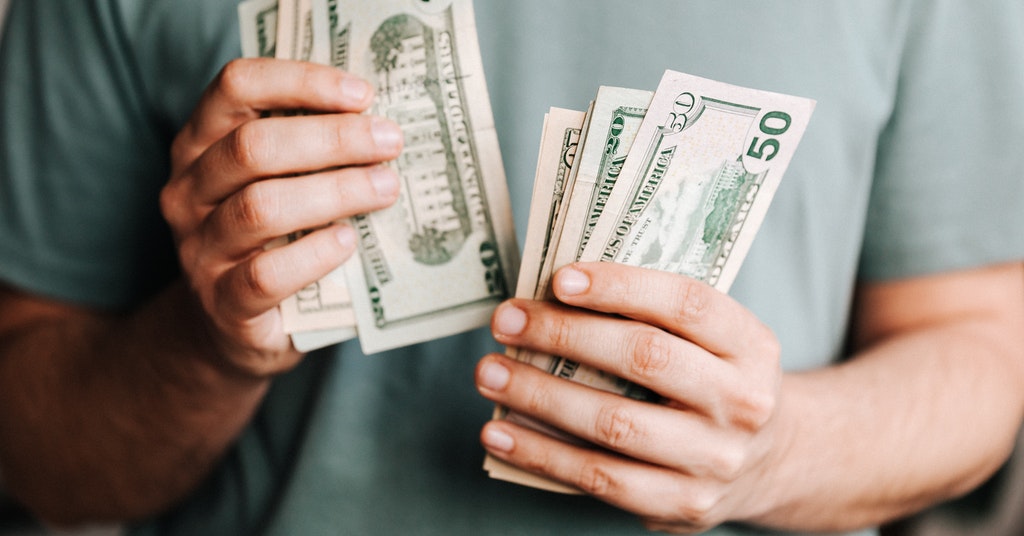Why is that happening and who’s behind the unexpected surge?

Why is Robinhood stock going up? Source: pexels.com
The Robinhood investment app has popularised mobile trading. Earlier this year, it enabled WallStreetBets users to speculate on AMC and GameStop shares. Today, it may seem the Robinhood stock itself has become the object of speculation, skyrocketing within a few days.
Timeline
July 28 – Robinhood priced its IPO at $38 a share, valuing the company at $31.7 billion. The investment platform raised $1.89 billion from the offering, setting the stage for trading under the symbol HOOD.
July 29 – Robinhood went public on the Nasdaq. HOOD fell 8% on its first day and has been traded below the initial price, until…
August 3 – Robinhood stock soared 24%, closing at $46.80 per share.
August 4 – The wild rally continued. Trading on Nasdaq exchange was halted for volatility several times. The stock touched $85 at one point and closed up 50.4% at $70.39 per share. HOOD’s weekly gains exceeded 100%.
August 5 – The stock fell back again by 28%, closing at $50.97.
August 6 – At the time of writing (1:19 PM ET) the shares are traded at $57.57, going up 12.95% since Thursday.
Reasons
To begin with, Robinhood IPO was one of the most anticipated public offerings in 2021. The platform has remained in the media spotlight for a while now. It’s been labeled as a Silicon Valley disruptor and a game-changer. Thus, many traders were eager to get the company’s shares seeing potential in that.
At the same time, both stock investors and the company’s management expected that the HOOD shares would be volatile. Many analysts considered Robinhood stock a high-risk investment. Such claims were substantiated by recent lawsuits against the platform, its business model that heavily depended on a controversial practice known as payment for order flow and loss of customer trust after the meme stock hype.
Therefore, Robinhood shares would be predictably more attractive for short-term gains and day trading, making their price unstable. Besides, the investment platform reserved about a fourth of its pre-IPO shares for its customers who are typically eager on meme stocks and speculative trading.
Nevertheless, the direction in which the stock price started moving in August was unexpected. On the contrary, some experts like David Trainer, Chief Executive of New Constructs, an investment research firm, suggested the initial price range of $38-42 makes HOOD already overpriced. Thus, many market observers were confused by the sudden surge.
One of the reasons why Robinhood shares went up on August 3 was a steady interest from a major investor.
That day, the founder of ARK Invest Cathie Wood purchased 89,622 shares of HOOD in ARK Fintech Innovation ETF, a position worth roughly $4.2 million based on Robinhood’s closing price of $46.80. The position added to the approximately 4.9 million HOOD shares Wood had previously bought for ARK Innovation ETF and 952,520 shares held by the ARK Next Generation Internet (ARKW) ETF. ARK Investment Management positions itself as a firm that focuses on investment solutions promising long-term growth. The company typically invests in stocks it projects to double in value over a five-year period. It’s no wonder that Wood’s commitment didn’t go unnoticed by retail investors.
According to data from SwaggyStocks, Robinhood became the most mentioned stock on the Wall Street Bets forum at the time it started the bullish rally, with more than 1,700 mentions during 24 hours. The majority of Robinhood’s mentions on the Wall Street Bets forum were positive, so those discussions may have triggered higher demand for HOOD stock as well.
Another reason for the enormous rally was the prospect Robinhood was going to be listing options contracts tied to the company’s shares. Options allow traders to hedge their portfolios or make directional bets on individual companies and broader indexes. Call options give investors the right to buy shares at a specific price later in time. Put options, on the other hand, give the owner the right to sell a specified amount of an underlying security at a pre-determined price within a specified time frame. The options activity indicated that traders were placing wide-ranging wagers on Robinhood shares. The most popular options were calls pegged to a so-called strike of $70. Though puts tied to the shares plunging to $20 or $30 were actively traded too.
However, on August 5, there came an announcement from Robinhood that existing shareholders will sell up to 97.9 million shares worth more than $6 billion at an undisclosed later date. The offering comes through an automatic conversion of convertible notes held by the stockholders since January. Faced with unprecedented volatility caused by the Wall Street Bets trading frenzy, Robinhood tapped credit lines and raised new debt. The selling shareholders include a number of VC firms like New Enterprise Associates, Andreessen Horowitz, Iconiq Capital, Institutional Venture Partners and Ribbit Capital. Retail investors were truly disappointed with the fact of the upcoming massive sale, losing trust for the company.
Moreover, CNBC’s “Mad Money” host Jim Cramer also recommended investors to sell part of their Robinhood stock while the price was high.
Increased sales volume (both projected and actual) may be one of the reasons for a lower share price.
However, HOOD experienced a quick rebound. Partially, the restored upward pattern is attributed to Robinhood’s investor relations team. Seeing a disturbing trading trend, Robinhood published a press release to reassure investors that “Robinhood is not itself selling any additional securities” that would dilute its shareholders, and that its filing of the Resale S-1 on Thursday merely fulfilled “a pre-existing contractual obligation” that it owed to “certain of its shareholders.”
In addition, the company projected that resale won’t happen until August 18 at the very least. The fintech disruptor explained that the SEC needs time to declare it effective and would require Robinhood’s quarterly financial report for that. Thus, day traders and meme stock investors still have time to make a profit on HOOD.
SEE ALSO:









